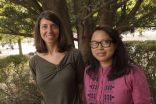(Press-News.org) A University of Tennessee, Knoxville, study finds that nonprofit organizations aiming to protect biodiversity show little evidence of responding to economic signals, which could limit the effectiveness of future conservation efforts.
The study is published this week in the academic journal Ecology and Evolution and can be read at http://bit.ly/1t8fT24.
The relationship between economic conditions and conservation efforts is complicated. On the one hand, funding for conservation depends on a booming economy, which swells state coffers and increases membership dues, service revenues and philanthropic giving. On the other hand, economic growth is often perceived by conservationists as a threat to habitats and ecosystems because of more demand for raw materials and increased development, waste and pollution. Conservation organizations must balance these two conflicting forces.
"Employment, the stock market, a recession—they are all assumed to impact how conservation organizations do their work. But it is all talk and no data," said Peter Kareiva, chief scientist at The Nature Conservancy. "This is the first study I know that actually used hard-nosed analysis to find out how conservation organizations change their behavior, or not, in response to economic shocks."
Nonprofits like The Nature Conservancy play a critical role in managing society's overall investment in biodiversity. In the U.S. alone, nonprofit organizations channel billions of dollars into efforts to conserve species and ecosystems. How effectively they manage these revenue streams depends on how well they cope with changes in the wider economy.
"Just as species have to evolve strategies to cope with feast and famine conditions in their environment, conservation nonprofits need to come up with strategies to deal with times of economic growth and recession if they are to achieve their conservation goals effectively," said Eric Larson, lead author of the study.
To find out just what strategies the nonprofits were using, the team examined conservation nonprofits' tax filings over a 10-year period that included a period of rapid growth as well as the 2008 recession.
What surprised them was how little evidence there was of responsiveness to economic conditions by these organizations.
"Conservation scientists pride themselves on developing strategic tools to help organizations prioritize ways to spend conservation funds. But as soon as we broaden the focus a bit to consider whole-organizational behavior, we see little evidence of strategy. Instead what we see is a sector that looks very much like it is just trying to muddle through," said Larson.
The authors also interviewed nonprofit leaders about organizational strategies. Their answers emphasized just how different conservation nonprofits are in how they try to deal with changing conditions. But once again, the researchers did not find that organizations employ orderly, proactive strategies to deal with changes in the economy. As one interviewee said, "In theory, we approach these issues strategically ... but in practice ... we're very opportunistic."
Larson and coauthors hope their findings encourage conservation nonprofits to plan for and respond to fluctuations in the economy effectively, and inspire other researchers to investigate how the economy affects conservation organizations and biodiversity itself.
INFORMATION:
Only forty per cent of the notable increase in autism cases that has been registered during the past few decades is due to causes that are as yet unknown.
The majority of the increase – a total of sixty per cent – can now be explained by two combined factors: changes in the diagnostic criteria and in the registration to the national health registers.
This is shown by a new study of disease prevalence among all individuals born in Denmark in the period 1980-1991, a total of 677,915 individuals.
The results have recently been published in the medical journal ...
If you can uniformly break the symmetry of nanorod pairs in a colloidal solution, you're a step ahead of the game toward achieving new and exciting metamaterial properties. But traditional thermodynamic -driven colloidal assembly of these metamaterials, which are materials defined by their non-naturally-occurring properties, often result in structures with high degree of symmetries in the bulk material. In this case, the energy requirement does not allow the structure to break its symmetry.
In a study led by Xiang Zhang, director of Berkeley Lab's Materials Sciences ...
Researchers at the University of Cambridge have managed to reconstruct the early stage of mammalian development using embryonic stem cells, showing that a critical mass of cells – not too few, but not too many – is needed for the cells to being self-organising into the correct structure for an embryo to form.
All organisms develop from embryos: a cell divides generating many cells. In the early stages of this process, all cells look alike and tend to aggregate into a featureless structure, more often than not a ball. Then, the cells begin to 'specialise' into ...
Los Angeles, CA (November 4, 2014) How does an individual's happiness level reflect societal conditions? A new article out today in the first issue of Policy Insights from the Behavioral and Brain Sciences (PIBBS) finds that similar to how GDP measures the effectiveness of economic policies, happiness can and should be used to evaluate the effectiveness of social policies.
Authors Shigehiro Oishi and Ed Diener examined research evaluating the effectiveness of policy related to unemployment rate, tax rate, child care, and environmental issues to determine if it's possible ...
Los Angeles, CA (November 4, 2014) The growing disparity in economic inequality has become so stark that even Janet Yellen, Federal Reserve chairwoman, recently expressed concern. Interestingly, new research has discovered that American citizens desire an unequal, but more equal distribution of wealth and income. Lower levels of this "unequality" are associated with decreased unethical behavior and increased motivation and labor productivity. This study is published today in the inaugural issue of Policy Insights from the Behavioral and Brain Sciences (PIBBS).
"People ...
Los Angeles, CA (November 4, 2014) With so much attention to curriculum and teaching skills to improve student achievement, it may come as a surprise that something as simple as how a classroom looks could actually make a difference in how students learn. A new analysis finds that the design and aesthetics of school buildings and classrooms has surprising power to impact student learning and success. The paper is published today in the inaugural issue of Policy Insights from the Behavioral and Brain Sciences (PIBBS).
Surveying the latest scientific research, Sapna Cheryan, ...
SALT LAKE CITY, Nov. 4, 2014 – University of Utah engineers have developed a new type of carbon nanotube material for handheld sensors that will be quicker and better at sniffing out explosives, deadly gases and illegal drugs.
A carbon nanotube is a cylindrical material that is a hexagonal or six-sided array of carbon atoms rolled up into a tube. Carbon nanotubes are known for their strength and high electrical conductivity and are used in products from baseball bats and other sports equipment to lithium-ion batteries and touchscreen computer displays.
Vaporsens, ...
PROVIDENCE, R.I. [Brown University] — We celebrate our triumphs over adversity, but let's face it: We'd rather not experience difficulty at all. A new study ties that behavioral inclination to learning: When researchers added a bit of conflict to make a learning task more difficult, that additional conflict biased learning by reducing the influence of reward and increasing the influence of aversion to punishment.
This newly found relationship between conflict and reinforcement learning suggests that the circuits in the frontal cortex that calculate the degree of ...
HOUSTON – (Nov. 4, 2014) – Rice University scientists who want to gain an edge in energy production and storage report they have found it in molybdenum disulfide.
The Rice lab of chemist James Tour has turned molybdenum disulfide's two-dimensional form into a nanoporous film that can catalyze the production of hydrogen or be used for energy storage.
The versatile chemical compound classified as a dichalcogenide is inert along its flat sides, but previous studies determined the material's edges are highly efficient catalysts for hydrogen evolution reaction ...
HOUSTON – (Nov. 4, 2014) – A majority of Madagascar's 101 species of lemurs are threatened with extinction, and that could have serious consequences for the rainforests they call home. A new study by Rice University researchers shows the positive impacts lemurs can have on rainforest tree populations, which raises concerns about the potential impact their disappearance could have on the region's rich biodiversity.
A large proportion of trees in Madagascar's rainforest have fruits eaten by lemurs. Lemurs in turn disperse the seeds of their fruit trees throughout ...



